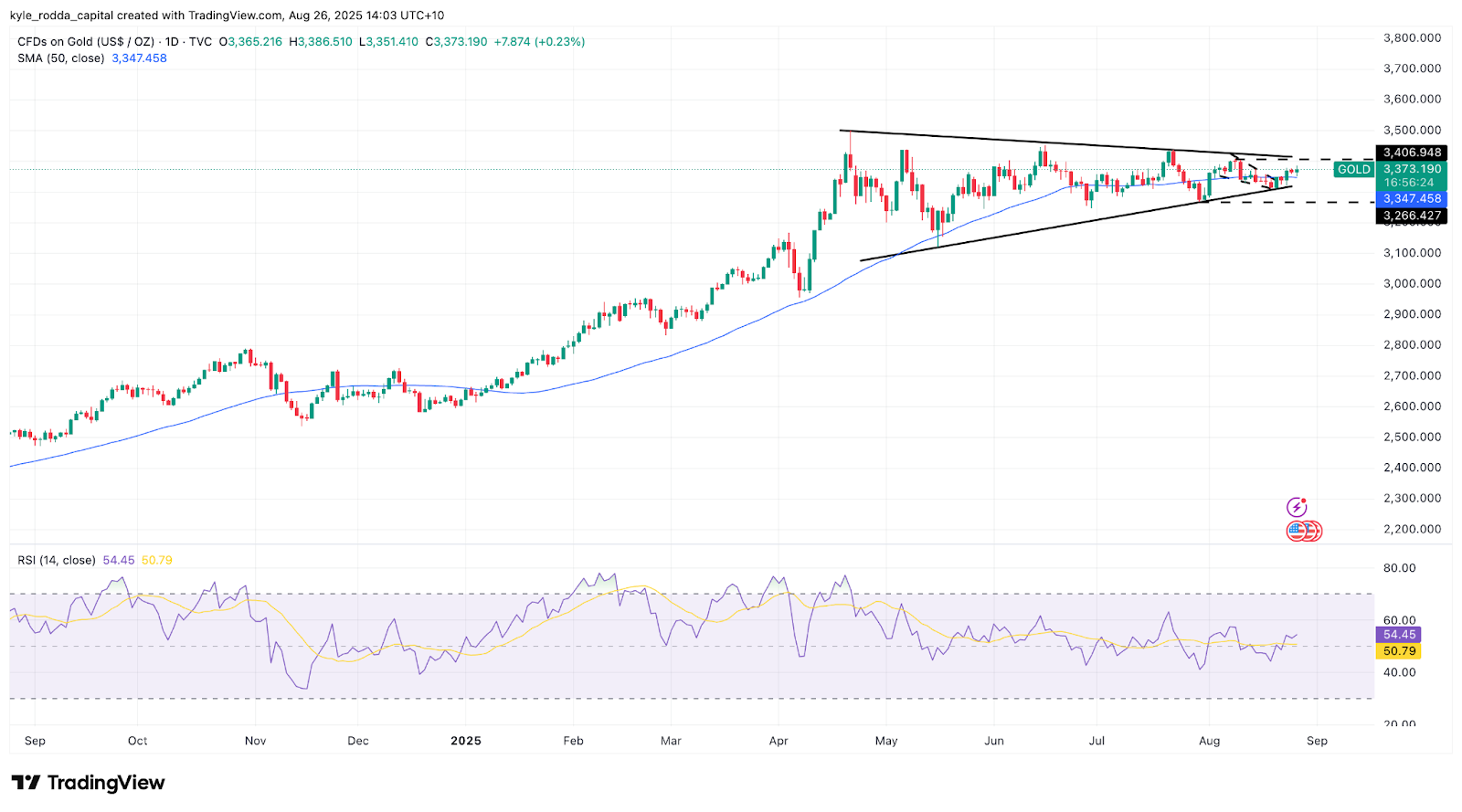US PCE data in focus as Fed weighs September rate cut
Forecasters expect a lift in the Fed's preferred inflation gauge
The spotlight in markets this week will turn to Friday’s release of the US Personal Consumption Expenditures (PCE) Price Index, the Federal Reserve’s preferred inflation gauge. Coming on the heels of Jerome Powell’s dovish turn at Jackson Hole, the data is a hurdle between the markets and a Fed rate cut in September.
Jackson Hole sets the stage for a September rate cut
Powell’s address last week marked a clear shift in emphasis from inflation to employment risks. He stressed that policy is already in restrictive territory and acknowledged that downside risks to the labour market are rising. Markets seized on that message, driving up the odds of a September rate cut to around 85%. The dollar fell, yields retreated, and equities rallied, reflecting renewed confidence that easing is on the way.

(Source: CME Group)
Importantly, Powell downplayed tariff-driven inflation pressures, describing them as short-lived and unlikely to alter the longer-term disinflationary trend. That signalled the Fed is willing to tolerate a temporary uptick in prices as it pivots towards supporting growth and jobs, while remaining cognizant of unanchored inflation expectations.
Annual Core PCE Index forecast to rise again on tariff passthrough
Consensus expectations are for core PCE inflation to edge higher to around 2.9% year-on-year as the Trump administration’s tariffs filter through the US economy. That would mark a modest acceleration but remain consistent with the Fed’s own projections, which see inflation finishing the year around 3.1%.
The market’s reaction may hinge less on the exact number and more on whether the figure rounds up to “3.0%” or higher. A print with a “3” handle could stir concern that inflation pressures are re-emerging, potentially testing the Fed’s willingness to cut rates. By contrast, an outcome in line with or below forecasts would likely reinforce the dovish momentum from Jackson Hole.
The markets vulnerable to nasty shock, gold looks poised to break-out
With rate cuts largely priced in, an upside surprise in the PCE Index could spark volatility. That could pressure equities and strengthen the US Dollar in the short run. However, provided the data matches expectations, the Fed appears comfortable cutting rates even as inflation floats towards 3% and away from target. A moderate rise in inflation, a softening labour market, and Powell’s slight pivot last week would support the Fed’s easing bias.
The data could also drive the next directional move in gold prices. The prospect of looming rate cuts is supporting the gold price, as is the recent move by the Trump administration to remove Fed Governor Lisa Cook for alleged fraud. Price action is carving out a symmetrical triangle patter – a typical consolidation pattern. A soft PCE print could drive gold towards a test of critical $US3400 resistance. Meanwhile, an upside surprise could spark a drop, with $US3200 a key support level.

(Source: Trading View)
(Past performance is not a reliable indicator of future results)